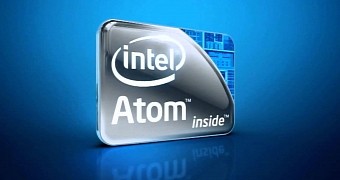Designed for mobile platforms, especially phones and tablets, Intel's Atom Z series and the Z3580 model became quite popular among smartphone and tablet manufacturers like ASUS.
Continuing the same legacy, the Z3580's successor, the Z3590 arrives on the same Z3580 "Moorfield" architecture while it supports faster graphics and CPU burst speeds. Coming with 4 new "Silvermont" CPU cores and PowerVR graphics on a single die, the device is manufactured on 22nm process technology, having the same lithography as its predecessor.
Its maximum GPU frequency has been increased to 640 MHz and is 20% more powerful than the former Z3580 SoC flagship, while the maximum CPU burst frequency went higher to 2.5 GHz, or by 7% than the previous Intel SoC.
Regarding the other specs, things are about the same to the Z3580. According to CPU World, it has a 2MB level 2 cache, supports x86 extensions of up to SSE4 and AES and gets Intel 64 technologies as the Execute Disable, Virtualization, SpeedStep, Smart Idle, and AES encryption technology. Integrated graphics are clocked at 457 MHz and can support 2 displays at once while coming with a Wireless Display feature.
Intel's new Atom could help the company gain a better market share
Memory-wise, it features a dual-channel memory controller that's embedded on the chip and it supports up to 4 GB of LPDDR3-1600 memory. I/O (input, output) options include 2x USB 2.0/3.0 ports.
Although the new Atom is an x86 processor, it will power exclusively tablets and smartphones that will run on Android. Even if it was believed that Cherry Trail PC entry-level processors will make their appearance in tablets and smartphones as well it, appears Intel stays conservative regarding its CPU progression and does not move to cross-platform processing units that soon, if ever.
The Atom's main competitor will remain, of course, Qualcomm's SnapDragon 810 and a future SnapDragon 820. Currently, the SnapDragon seems quite on par with the new Atom although Intel's processor's frequency is slightly higher with 2.7GHz vs SnapDragon's 2GHz.

 14 DAY TRIAL //
14 DAY TRIAL //